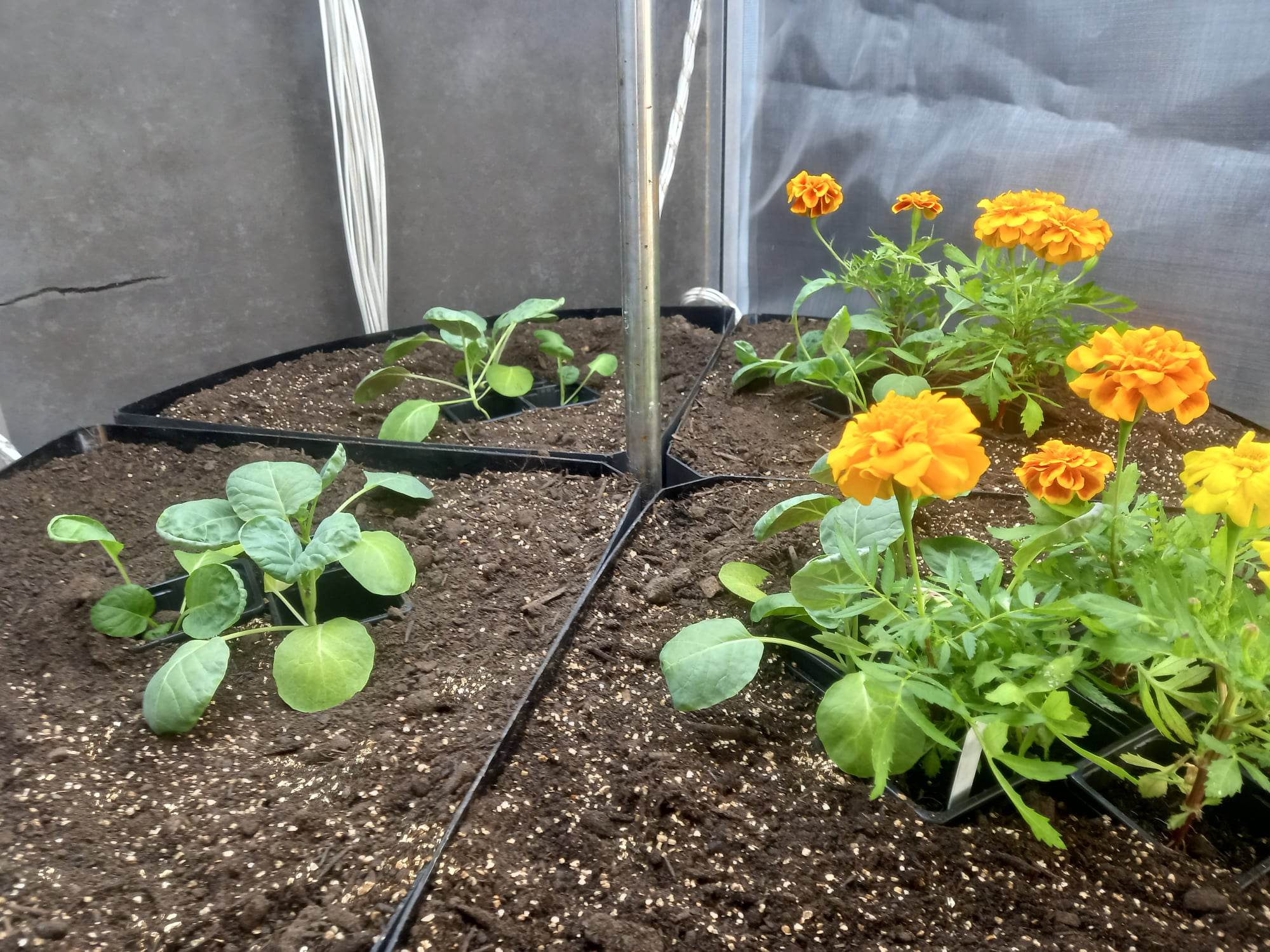Companion Planting
Companion Planting for Increased Plant Health
Funded by the Royal Horticultural Society and the University of Warwick, Warwick Industrial Fellowship
PhD project being carried out by Sam Baillie and supervised by Prof. Rosemary Collier
A widely raised question in the research of plant-insect interactions is why plants appear healthier in diverse natural ecosystems despite the innumerable arthropod pest species. Extensive pest damage associated with monocultures is rarely seen in such complex polyculture environments. Companion planting is a form of cultivated polyculture which has been practiced for centuries that aims to embrace this natural diversity for increased plant health.
Companion planting is the creation of mutualistic plant communities where the species involved benefit from their interactions. Combining companion plants with cultivated edibles has been recommended as a viable pest control strategy, consequently allowing the reduction of pesticide applications. This approach is widely researched and has been implemented in commercial horticulture; for example, alyssum (Lobularia maritima) intercropped with lettuce, has been shown to reduce aphid infestations. Furthermore, there is the potential for intercropping in arable farming systems. However, it is suggested that companion planting may be more appropriate and effective for small-scale home gardens. Despite companion planting having a long history of practice by gardeners, the approaches have often arisen from conjecture and folklore. Many combinations of companion plants are recommended by gardeners, seed companies and a wealth of popular garden literature, yet there is insufficient scientific evidence relating to the efficacy of these claims.
Working with horticulturalists and entomologists from the RHS (Royal Horticultural Society), this project aims to test the efficacy of popular companion and cultivated edible plant pairings through field trials. Complementary experiments will aim to elucidate the biological mechanisms through which pest behaviour is modified by the companion planting (e.g. volatile chemicals and visual cues influencing host plant finding and colonisation, or through the attraction of beneficial natural enemies). The project’s aim is to provide effective companion planting options supported by scientific evidence.


